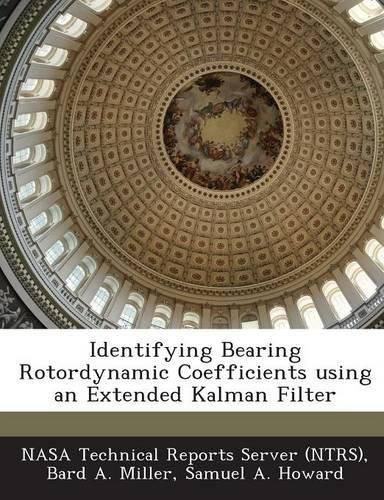Readings Newsletter
Become a Readings Member to make your shopping experience even easier.
Sign in or sign up for free!
You’re not far away from qualifying for FREE standard shipping within Australia
You’ve qualified for FREE standard shipping within Australia
The cart is loading…






An Extended Kalman Filter is developed to estimate the linearized direct and indirect stiffness and damping force coefficients for bearings in rotor-dynamic applications from noisy measurements of the shaft displacement in response to imbalance and impact excitation. The bearing properties are modeled as stochastic random variables using a Gauss-Markov model. Noise terms are introduced into the system model to account for all of the estimation error, including modeling errors and uncertainties and the propagation of measurement errors into the parameter estimates. The system model contains two user-defined parameters that can be tuned to improve the filter s performance; these parameters correspond to the covariance of the system and measurement noise variables. The filter is also strongly influenced by the initial values of the states and the error covariance matrix. The filter is demonstrated using numerically simulated data for a rotor-bearing system with two identical bearings, which reduces the number of unknown linear dynamic coefficients to eight. The filter estimates for the direct damping coefficients and all four stiffness coefficients correlated well with actual values, whereas the estimates for the cross-coupled damping coefficients were the least accurate.
$9.00 standard shipping within Australia
FREE standard shipping within Australia for orders over $100.00
Express & International shipping calculated at checkout
An Extended Kalman Filter is developed to estimate the linearized direct and indirect stiffness and damping force coefficients for bearings in rotor-dynamic applications from noisy measurements of the shaft displacement in response to imbalance and impact excitation. The bearing properties are modeled as stochastic random variables using a Gauss-Markov model. Noise terms are introduced into the system model to account for all of the estimation error, including modeling errors and uncertainties and the propagation of measurement errors into the parameter estimates. The system model contains two user-defined parameters that can be tuned to improve the filter s performance; these parameters correspond to the covariance of the system and measurement noise variables. The filter is also strongly influenced by the initial values of the states and the error covariance matrix. The filter is demonstrated using numerically simulated data for a rotor-bearing system with two identical bearings, which reduces the number of unknown linear dynamic coefficients to eight. The filter estimates for the direct damping coefficients and all four stiffness coefficients correlated well with actual values, whereas the estimates for the cross-coupled damping coefficients were the least accurate.